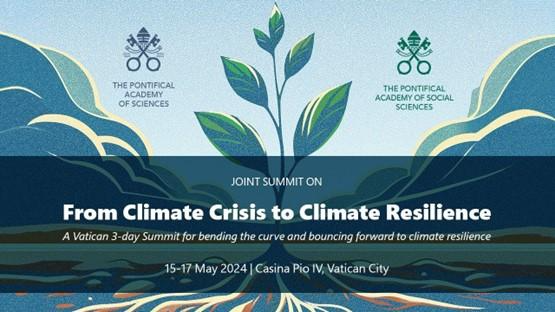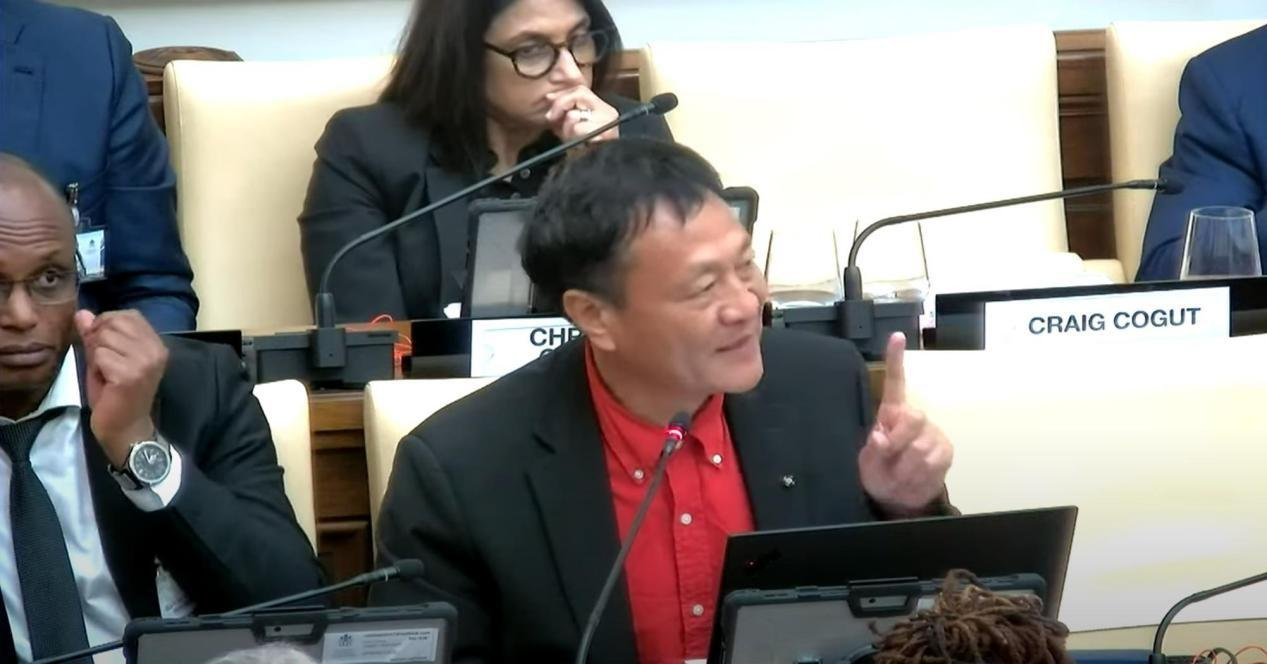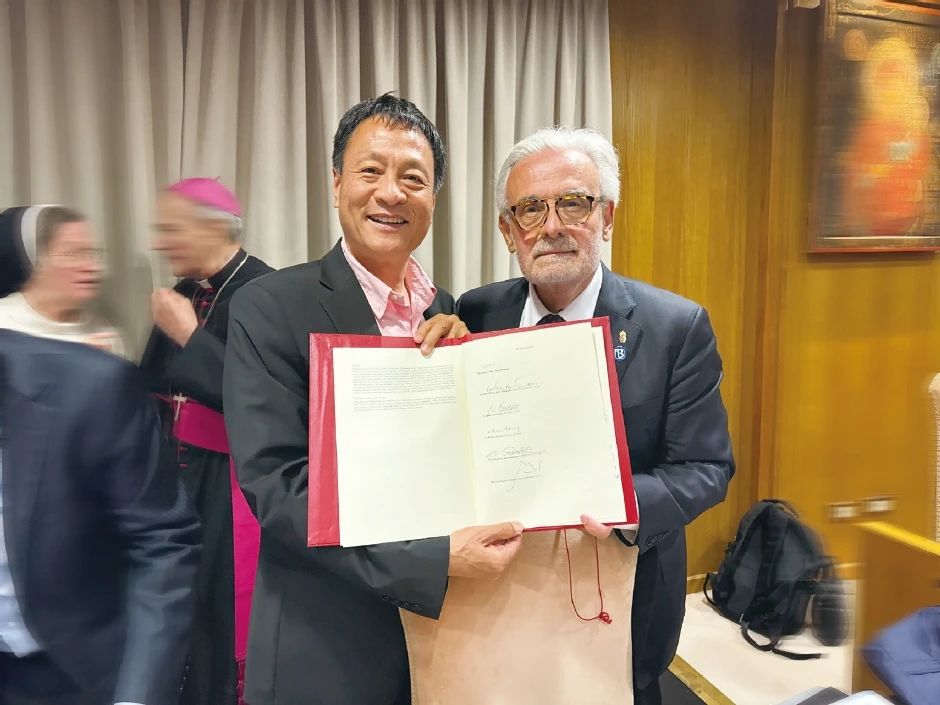導(dǎo)讀
2024年5月��,主題為“從氣候危機(jī)到氣候韌性”的梵蒂岡氣候峰會(huì)成功舉辦���,峰會(huì)的一大里程碑式成就是討論并達(dá)成了《全球氣候韌性公約》�。這一綜合行動(dòng)綱領(lǐng)呼吁通過實(shí)施MAST原則(減緩���、適應(yīng)和社會(huì)變革)來(lái)增強(qiáng)氣候韌性�,并為氣候行動(dòng)的戰(zhàn)略方法奠定基礎(chǔ)�����。面對(duì)當(dāng)前的氣候挑戰(zhàn),理解氣候變化的復(fù)雜性���、進(jìn)行氣候設(shè)計(jì)���,以及推動(dòng)教育范式變革以培養(yǎng)未來(lái)地球監(jiān)護(hù)的全球領(lǐng)導(dǎo)力至關(guān)重要。
關(guān)鍵詞
梵蒂岡氣候峰會(huì)�;氣候危機(jī);氣候韌性�;MAST原則;氣候設(shè)計(jì)��;地球監(jiān)護(hù)�;教育范式
氣候設(shè)計(jì):
為了同一個(gè)地球
Climate Design for One Planet
北京大學(xué)建筑與景觀設(shè)計(jì)學(xué)院
2024年5月15~17日,主題為“從氣候危機(jī)到氣候韌性”的梵蒂岡氣候峰會(huì)于教皇比奧四世別墅舉辦�����。本次峰會(huì)由教皇科學(xué)院和教皇社會(huì)科學(xué)院主辦���,匯聚了全球各領(lǐng)域的領(lǐng)導(dǎo)者�,包括教皇弗朗西斯���、各級(jí)政府官員���、頂尖科學(xué)家、信仰領(lǐng)袖����,以及一位來(lái)自亞馬遜的原住民領(lǐng)袖。此次活動(dòng)是推動(dòng)全球氣候韌性行動(dòng)的關(guān)鍵舉措�,就如何共同應(yīng)對(duì)氣候變化帶來(lái)的緊迫挑戰(zhàn)進(jìn)行了跨學(xué)科、跨文化的廣泛討論�����。
峰會(huì)強(qiáng)調(diào)了氣候危機(jī)的嚴(yán)峻現(xiàn)狀和全球變暖問題的緊迫性。會(huì)議報(bào)告展示了近年來(lái)不斷刷新紀(jì)錄的高溫事件��,并預(yù)測(cè)了未來(lái)溫度上升或?qū)?dǎo)致的廣泛生態(tài)和社會(huì)影響���。當(dāng)前���,亟需強(qiáng)有力的行動(dòng)來(lái)應(yīng)對(duì)這一態(tài)勢(shì)在全球范圍內(nèi)帶來(lái)的健康、安全和經(jīng)濟(jì)威脅�����。峰會(huì)的一大里程碑是討論并達(dá)成了《全球氣候韌性公約》。這一綜合行動(dòng)綱領(lǐng)呼吁通過實(shí)施MAST(減緩�、適應(yīng)和社會(huì)變革)原則來(lái)增強(qiáng)氣候韌性,并為氣候行動(dòng)的戰(zhàn)略和方法奠定了基礎(chǔ)�����。
1)減緩:峰會(huì)強(qiáng)調(diào)了迅速減排和實(shí)施減少現(xiàn)有大氣中溫室氣體策略的必要性����,包括遏制碳排放和促進(jìn)向可再生能源過渡的技術(shù)發(fā)展及政策制定。
2)適應(yīng):認(rèn)識(shí)到某些氣候影響的不可避免性��,峰會(huì)倡導(dǎo)增強(qiáng)公共健康���、基礎(chǔ)設(shè)施和生態(tài)系統(tǒng)韌性����,包括使社區(qū)和自然系統(tǒng)更好地抵御氣候干擾并從中恢復(fù)���。
3)社會(huì)變革:這或許是其中最具雄心的原則�����。峰會(huì)呼吁面向持續(xù)發(fā)展的文化和教育轉(zhuǎn)變�����,強(qiáng)調(diào)了培養(yǎng)氣候變化意識(shí)素養(yǎng)���、鼓勵(lì)全社會(huì)的可持續(xù)實(shí)踐,并發(fā)展能夠促進(jìn)氣候應(yīng)對(duì)行動(dòng)中的公平�����、正義的伙伴關(guān)系����。
MAST原則概括了峰會(huì)所形成的增強(qiáng)氣候韌性的整體方法,強(qiáng)調(diào)了環(huán)境可持續(xù)性和社會(huì)公平的相互依賴性�����。峰會(huì)成果旨在指導(dǎo)近期和長(zhǎng)期戰(zhàn)略計(jì)劃���,是全球在氣候危機(jī)中邁向更具韌性未來(lái)的關(guān)鍵一步���。
在具有里程碑意義的梵蒂岡氣候峰會(huì)上,全球各界領(lǐng)導(dǎo)者共同簽署了《全球氣候韌性公約》。本次峰會(huì)象征著各行各業(yè)和不同文化為應(yīng)對(duì)我們這個(gè)時(shí)代所面臨的緊迫環(huán)境挑戰(zhàn)而做出的一致承諾����,凸顯了全球共識(shí)——需要立即采取強(qiáng)有力的行動(dòng),為子孫后代保護(hù)我們的地球�����。筆者也有幸參與了這一重要活動(dòng)��,并有感而成此文�。圖為俞孔堅(jiān)和同峰會(huì)聯(lián)合主席馬塞洛·蘇亞雷斯–奧羅斯科在簽署《全球氣候韌性公約》后合影留念的瞬間。
呼喚地球監(jiān)護(hù)人才培養(yǎng)的教育變革
作為這次峰會(huì)的見證者并受峰會(huì)的觸動(dòng)����,筆者深切感受到氣候危機(jī)時(shí)代對(duì)教育機(jī)構(gòu)變革的緊迫需求。這種變革不僅是為了應(yīng)對(duì)當(dāng)前迫在眉睫的挑戰(zhàn)���,更是為了轉(zhuǎn)變教育范式����,以利于培養(yǎng)致力于地球監(jiān)護(hù)的新一代全球領(lǐng)導(dǎo)者�����。
理解氣候變化的復(fù)雜性地球作為一個(gè)復(fù)雜的系統(tǒng),其各個(gè)組成部分以紛繁多樣的方式相互作用影響���。氣候變化正是這種源自各種相互關(guān)聯(lián)生態(tài)系統(tǒng)變化之復(fù)雜性的典型例證����。不幸的是�,解決氣候問題的傳統(tǒng)方法往往是狹隘、片面的����。單一目標(biāo)的解決方案����,如以碳為中心的減緩策略、碳信用�����、地球工程或傳統(tǒng)的灰色基礎(chǔ)設(shè)施等��,不僅不能充分解決問題�,有時(shí)還會(huì)引發(fā)潛在問題。此類方法往往未能體現(xiàn)環(huán)境變化的系統(tǒng)性特征����,并可能導(dǎo)致意想不到的后果��,使我們社會(huì)的生態(tài)和社會(huì)結(jié)構(gòu)進(jìn)一步復(fù)雜化�。
因此�,我們需要采取綜合的氣候行動(dòng)方法,不僅要考慮環(huán)境影響�����,還要考慮社會(huì)經(jīng)濟(jì)和文化背景�。例如,雖然碳信用旨在減少排放�����,但通常無(wú)法解決大型環(huán)境項(xiàng)目帶來(lái)的潛在社區(qū)遷移或生物多樣性退化問題����。同樣,地球工程解決方案或許能夠緩解氣候變化問題�����,但也可能產(chǎn)生新的環(huán)境挑戰(zhàn)���,以我們尚且無(wú)法完全理解的方式擾亂當(dāng)?shù)貧夂蚝腿蛏鷳B(tài)系統(tǒng)��。
在應(yīng)對(duì)復(fù)雜問題時(shí)���,教育在培養(yǎng)知識(shí)淵博����、深思熟慮和積極主動(dòng)的地球監(jiān)護(hù)領(lǐng)導(dǎo)者方面的重要性日益彰顯����。我們必須培養(yǎng)那些了解地球生態(tài)系統(tǒng)的復(fù)雜性,并能優(yōu)先考慮長(zhǎng)期可持續(xù)性而非短期收益的領(lǐng)導(dǎo)者�����。這意味著應(yīng)當(dāng)在教育系統(tǒng)中整合氣候科學(xué)�、政策和倫理知識(shí)�,以確保未來(lái)的領(lǐng)導(dǎo)者能夠針對(duì)復(fù)雜問題制定出全面的、包容性的解決方案����。
氣候設(shè)計(jì)的必要性為應(yīng)對(duì)這些挑戰(zhàn),筆者提倡“氣候設(shè)計(jì)”這一基于設(shè)計(jì)思維����、通過創(chuàng)新思維整體地解決復(fù)雜問題的系統(tǒng)性方法�����。氣候設(shè)計(jì)并非僅是技術(shù)修復(fù)���,而是一種整合減緩、適應(yīng)和社會(huì)變革的方法���。
減緩氣候變化必須超越以碳為核心的單一路徑�����,考慮更廣泛的生態(tài)影響����,促進(jìn)生物多樣性和系統(tǒng)韌性�����;適應(yīng)策略應(yīng)增強(qiáng)社區(qū)——特別是最脆弱群體——應(yīng)對(duì)變化的能力�����,同時(shí)保持當(dāng)?shù)厣鷳B(tài)系統(tǒng)的完整性;最重要的是�����,社會(huì)變革必須對(duì)上述氣候變化行動(dòng)提供支撐���,培養(yǎng)重視可持續(xù)性�、公平性和社區(qū)主導(dǎo)行動(dòng)的“整體地球”思維方式�����,這是長(zhǎng)久韌性發(fā)展的關(guān)鍵所在�����。
氣候設(shè)計(jì)鼓勵(lì)以綜合性方法發(fā)展具備生態(tài)科學(xué)合理性且能夠促進(jìn)社會(huì)公平的解決方案�����。這些方案和方法利用跨學(xué)科研究吸引當(dāng)?shù)厣鐓^(qū)參與決策過程�,優(yōu)先考慮基于自然的解決方案����,以運(yùn)用自然系統(tǒng)的固有能力來(lái)應(yīng)對(duì)氣候挑戰(zhàn)��。
教育范式的轉(zhuǎn)變當(dāng)前的全球教育系統(tǒng)像是一座有很多相互分隔的房間的迷宮����,每個(gè)房間都有不同的鑰匙�����,訓(xùn)練學(xué)生在孤立的路徑上探索����,而難以在一個(gè)公共大廳中匯合。這種分類式的教育方法培養(yǎng)出的人才與其專業(yè)領(lǐng)域的廣泛影響不相匹配���。為了應(yīng)對(duì)全球氣候危機(jī)這樣的復(fù)雜問題���,我們必須革命性地改變未來(lái)地球監(jiān)護(hù)領(lǐng)導(dǎo)者的教育方式。
新的教育范式應(yīng)側(cè)重于互聯(lián)性和普遍性��,為學(xué)生提供一把“萬(wàn)能鑰匙”����。這把鑰匙是一種對(duì)地球管理的跨學(xué)科和整體性理解,強(qiáng)調(diào)人類和生態(tài)健康的相互聯(lián)系。這種教育不僅限于傳統(tǒng)的環(huán)境科學(xué)�,還將通過可持續(xù)發(fā)展的視角整合經(jīng)濟(jì)學(xué)、社會(huì)學(xué)�����、政治學(xué)等領(lǐng)域的原則�����。
這種創(chuàng)新的教育方法將培養(yǎng)能夠在全球?qū)用嫠伎?��、在本地行?dòng)����,并認(rèn)識(shí)到本地社區(qū)健康與全球生態(tài)系統(tǒng)密不可分的領(lǐng)導(dǎo)者�����。這些領(lǐng)導(dǎo)者將成為踐行“整體地球”理念的先鋒����,承認(rèn)一個(gè)公正、可持續(xù)的世界將使所有人而非少數(shù)特權(quán)者受益�����。
結(jié)論
培養(yǎng)具備整體性和綜合思維能力的新一代領(lǐng)導(dǎo)者是必要且緊迫的�����。隨著氣候變化等全球挑戰(zhàn)的不斷演變��,我們對(duì)于領(lǐng)導(dǎo)力及教育的思路也必須不斷發(fā)展����。通過加強(qiáng)“整體地球”監(jiān)護(hù)理念的教育,我們可以培養(yǎng)能夠駕馭和解決未來(lái)復(fù)雜問題的領(lǐng)導(dǎo)者��。這一可持續(xù)未來(lái)的愿景是我們作為全球生命共同體的一部分所必須努力實(shí)現(xiàn)的目標(biāo)��。
1 A Call to Climate Resilience: The Vatican Climate Summit
The Vatican Climate Summit, titled “From Climate Crisis to Climate Resilience” (“the Summit” hereafter), was held from May 15 to 17, 2024, at Casina Pio IV in Vatican City. Organized under the guidance of the Pontifical Academy of Sciences (PAS) and the Pontifical Academy of Social Sciences (PASS), the Summit convened a diverse group of global leaders, including Pope Francis, government officials from various levels, top scientists, belief leaders, and an indigenous leader from the Amazon. This event was pivotal in galvanizing global action towards climate resilience, reflecting a broad and inclusive engagement across disciplines and cultures to address the pressing challenges posed by climate change.
The Summit highlighted the alarming status quo of the climate crisis, focusing discussions on the urgent realities of global warming. Reports presented at the Summit underscored the record-breaking temperatures of recent years and projected a troubling future with potential temperature increases leading to extensive ecological and societal impacts. The current trajectory threatens significant health, safety, and economy worldwide, highlighting the imperative need for immediate and robust actions. A landmark achievement of the Summit was the introduction and adoption of the Planetary Protocol for Climate Change Resilience. This comprehensive framework calls for global cooperation to enhance climate resilience through the implementation of the MAST principles—mitigation, adaptation, and societal transformation—laying the groundwork for a strategic approach to climate action.
1) Mitigation: the Summit emphasized the necessity of rapid emission reductions and the implementation of strategies to decrease existing atmospheric greenhouse gases, including advancing technologies and policies that curb emissions and transition towards renewable energy sources.
2) Adaptation: recognizing the inevitability of some climate impacts, the Summit advocated for strengthening resilience across public health, infrastructure, and ecosystems, which involves preparing communities and natural systems to better withstand and recover from climate disturbances.
3) Societal transformation: this principle, calling for a cultural and educational shift towards sustainability, is perhaps the most ambitious. The Submit stresses the importance of fostering climate literacy, encouraging sustainable practices across all sectors of society, and developing partnerships that promote equity and justice in climate responses.
These MAST principles encapsulate the Summit’s holistic approach to climate resilience, stressing the interdependence of environmental sustainability and social equity. The outcomes of the Summit, aimed at guiding both immediate and long-term strategies, signify a crucial step forward in global efforts to address the climate crisis and build a more resilient future.
2 The Call for Revolutionary Change in Global Leadership Education for Planet Stewardship
Participating and being inspired by the Summit, the author has witnessed first-hand the urgent need for revolutionary changes within our institutions. This transformation is crucial not just for addressing immediate challenges but for fostering a paradigm shift in education to nurture a new generation of global leaders committed to planet stewardship.
Understanding the Complexity of Climate Change
The planet functions as a complex system, where each component interacts with and impacts the others in myriad ways. Climate change exemplifies this complexity, arising from diverse interconnected ecosystem changes. Unfortunately, traditional approaches to addressing climate issues have often been narrow and fragmented. Singular-goal solutions such as carbon-focused mitigation strategies, carbon credits, geoengineering or conventional grey-infrastructure adaptations are not only insufficient but would sometimes exacerbate the underlying issues. Such methods often fail to address the systemic nature of environmental changes, leading to unintended consequences that further complicate the ecological and social fabric of our societies.
Therefore, it requires an integrated approach to climate action that considers not only the environmental impacts, but also the socio-economic and cultural contexts. For instance, while carbon credit aims to reduce emissions, normally, it does not address the community displacement or biodiversity degradation along with large-scale environmental projects. Similarly, geoengineering solutions may alleviate the symptoms of climate change but could potentially create new environmental challenges, disrupting local climates and global ecosystems in ways we do not fully understand.
As tackling these complex issues, the role of education in developing informed, thoughtful, and proactive leaders for planet stewardship becomes increasingly significant. We must cultivate a generation of leaders who understand the complexities of the planet’s ecosystems and be prepared to make decisions that prioritize long-term sustainability over short-term gains. This means integrating climate science with policy and ethics in educational systems to ensure that future leaders can devise solutions that are as comprehensive and inclusive as the problems are complex.
The Imperative for Climate Design
In response to these challenges, I advocate a comprehensive approach known as “climate design.” Rooted in design thinking, it systematically tackles complex problems through innovative, holistic solutions. Climate design goes beyond mere technical fixes by integrating mitigation, adaptation, and crucially, societal transformation.
Mitigation efforts should extend beyond carbon to consider broader ecological impacts, promoting biodiversity and system resilience. Adaptation strategies should be designed to enhance the ability of communities, especially the most vulnerable, to cope with changes while preserving the integrity of local ecosystems. Crucially, societal transformation must underpin these efforts, cultivating a global mindset that values sustainability, equity, and community-led initiatives, which are critical for long-term resilience.
By fostering an integrative approach, climate design encourages the development of solutions that are both environmentally sound and socially equitable. The efforts leverage cross-disciplinary research, engage local communities in the decision-making process, and prioritize nature-based solutions that harness the inherent capabilities of natural systems to address climate challenges.
A Paradigm Shift in Education
The current global education system often resembles a labyrinth of segregated rooms, each with a different key, training students to navigate isolated paths without ever converging in a common hall. This fragmented educational paradigm breeds specialists disconnected from the broader implications of their expertise. To counter this, we must revolutionize how we educate future leaders for planet stewardship.
The new educational paradigm should focus on interconnectivity and universality, equipping students with a “universal key” that unlocks multiple doors. This key is an interdisciplinary and holistic understanding of planet stewardship that emphasizes the interconnectedness of human and ecological health. Such education will not be confined to traditional environmental science but incorporate principles of economics, sociology, and political science, etc., through the lens of sustainable development.
This transformative educational approach will prepare leaders who can think globally and act locally, recognizing that the health of local communities is inextricably linked to the global ecosystem. These leaders will be pioneers of the “One Planet” philosophy, acknowledging that a just and sustainable world is beneficial for all, not just a privileged few.
The call for a new generation of leaders equipped with holistic and integrative thinking skills is not just a necessity but urgent. As global challenges like climate change continue to evolve, so too must our approaches to leadership and education. By fostering an educational system that emphasizes comprehensive, planet-centric stewardship, we can nurture leaders capable of navigating and solving the complex problems of tomorrow. This vision for a sustainable future is what we, as part of the global community, must strive to implement.
本文引用格式 / PLEASE CITE THIS ARTICLE AS
Yu, K. (2024). Climate design for one planet. Landscape Architecture Frontiers, 12(3), 4?7. https://doi.org/10.15302/J-LAF-1-010038
編輯 | 高雨婷���,田樂
制作 | 高雨婷
媒體發(fā)布 | 馬哲
版權(quán)聲明:本文版權(quán)歸原作者所有���,請(qǐng)勿以景觀中國(guó)編輯版本轉(zhuǎn)載。如有侵犯您的權(quán)益請(qǐng)及時(shí)聯(lián)系���,我們將第一時(shí)間刪除���。
投稿郵箱:info@landscape.cn
項(xiàng)目咨詢:18510568018(微信同號(hào))

 京公海網(wǎng)安備 110108000058號(hào)
京公海網(wǎng)安備 110108000058號(hào)












